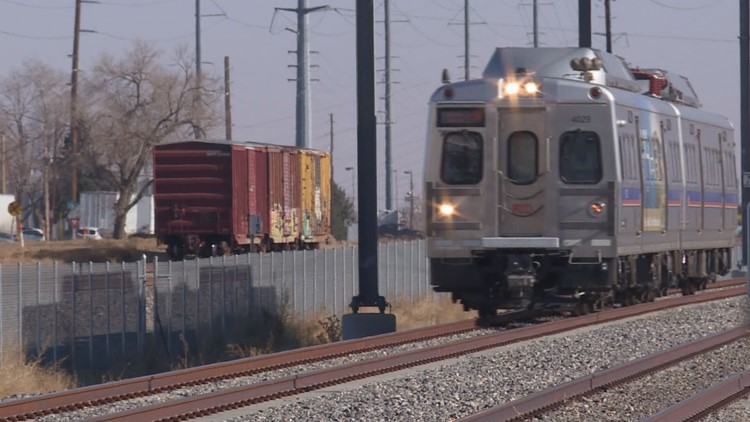The Regional Transportation District – the organization in charge of public transportation in Denver and the surrounding area – has been operating the A Line for more than two years without the federal government’s official stamp of approval. The “train to the plane” runs from downtown to the airport thanks to a temporary waiver, but the Federal Railroad Administration said last month that enough was enough. The FRA called kinks with the A Line “unacceptable” and demanded an action plan from RTD that detailed a resolution.
Friday, RTD said it submitted its action plan to fix the issues within one year.
So, what are the problems exactly? Here are the answers to your A LINE FAQ:
WHY DOES THE A LINE HAVE SO MANY PROBLEMS? CAN’T WE USE THE SAME OLD TECHNOLOGY THAT HAS ALWAYS BEEN USED TO OPERATE TRAINS?
Good question, and we get this a lot. The answer is no. When a deadly train crash happened in California in 2008, Congress said train lines have to use Positive Train Control to operate. PTC uses GPS technology to tell trains where they can travel safely; the system was designed to prevent derailments and collisions. All trains will eventually have PTC because of this federal mandate. The A Line was the first in the country to have PTC built into the tracks, while other lines across the country will have to edit their current systems to include it. Congress has pushed back the deadline for that before.
RELATED: Making sense of the alphabet soup: A guide to all those RTD acronyms (This guide will help explain some of all this, too.)
WHAT’S THE PROBLEM?
The FRA has taken issue with the timing of the crossing gates along the:
- A Line
- B Line – which began running from Union Station to Westminster two months after the A Line opened.
- and G Line – the yet-to-open train that will run from Union Station to Arvada and Wheat Ridge.
The gates are inconsistent and can stay down too long.
WHY DOES IT MATTER IF THE GATES STAY DOWN TOO LONG?
In addition to impacting traffic flow, regulators see this as an issue of safety. If drivers or pedestrians become tired of waiting too long for the gates to rise, and then decide to go around them, there’s potential for a collision. PTC can stop two trains from hitting each other, but it can't stop a crash if someone walks onto the tracks.
HOW DID THE A LINE START RUNNING IF THERE ARE CONCERNS?
The crossing gates were a problem from the start. The federal government said RTD could open the A Line, though, if guards manned the crossings and the train blared the horns as it passed. The feds granted RTD temporary waivers to operate and said at one point that they were okay with an extra 20-second buffer time for the gates. But, according to a letter the FRA wrote in November, they came out to test gates in person and some of the gates didn’t meet the criteria. The FRA demanded that RTD and the contractor for the train projects, Denver Transit Partners, get things fixed.
ISN’T RTD IN A LEGAL BATTLE WITH THAT CONTRACTOR?
Yes. DTP – a group of private companies charged with designing and operating the train – and RTD are at odds over which organization is to blame for the problems and which of them should foot the bills to fix them. But they both say the train is safe, and RTD says the A Line is on time 97 percent of the time.
WHEN WILL THE G LINE OPEN?
The FRA will not give its formal approval to the A Line until the timing problem is sorted out. The train can’t stop blaring the horns until then either. The G Line won’t open before all of that’s taken care of, and when will that be? Time will tell.
Have another question? Email next@9news.com



